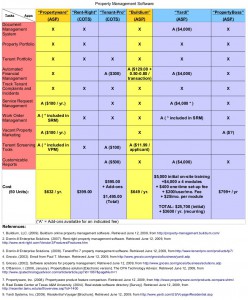With the growing focus of disaster mitigation, response and recovery, companies that rely on information systems need to prevent and minimize the impact of disasters (whether natural or man-made) to their infrastructure. Society’s focus is to regain a sense of normalcy which requires a functioning economy, thereby increasing the need for companies to recover quickly.
By providing expert philosophies, procedures, systems and tools, DRAM-IT can ensure that the client will transition seamlessly from pre-disaster to post-disaster with no negative long-term effects.
We start with employee-focused health, safety and security. We believe that the employee is the first defense against failure. Employees should be healthy and not have their minds occupied by other domestic problems (e.g. family welfare) which is why in times of a disaster affecting the community, we contract with armed security agencies to provide force security for key employees and their families. This focus allows other employees to take care of their own before returning to work. The same security force will provide on-site perimeter security allowing employees to feel safe while aiding in recovery efforts. But, before the incident occurs, we will create processes to assist each employee in staying healthy and fit, both physically and mentally, including the creation of medical response teams to manage on-site medical emergencies until EMS can arrive.
Data loss can be immeasurable and therefore cannot be tolerated. After performing a forensic analysis of current IT practices, DRAM-IT will offer methods of securing data with redundant distributed arrays with cryptographic and hashing intelligence ensuring the data has not been and cannot be manipulated. Along with distributed storage, we can offer distributed processing to ensure the business keeps running without a need for direct input by employees.
During a disaster, the focus needs to be on initiating recovery processes and requires interfacing with local authorities to be part of the solution. We will provide the internal Incident Command structure which will integrate with the local, State, and Federal efforts to ensure pooling of resources. We are also committed to the community. The faster the individual entities of a community can recover, the faster the community as a whole can heal.
With DRAM-IT Systems Mitigation, Response and Recovery, we can ensure that you can concentrate on what is important… we’ll take care of the rest.
By providing an all-encompassing approach to disaster management, our clients can be assured of continuous critical systems processing, ensuring business continuity throughout the disaster.
| Functional Area (See Figure 7.23) | Supporting Information Systems (See Figure 1.6) |
| Example: Human Resource Management | Example: Transaction Processing Systems |
| Command | Executive Information Systems |
| Operations | Decision Support & Strategic Info Systems |
| Tactical | Knowledge Management & Expert Systems |
| Logistics | Specialized / Transaction Control Systems |
| Finance | Specialied / Transaction Control Systems |
Subject: Investment Opportunity – “Disaster Response and Management – IT (DRAM-IT)” 02/25/14
To Whom it May Concern
I am writing you as an entrepreneur in support of the community. We have faced a number of disasters recently and our economy continuously suffers. I hope to provide a host of services to companies which are key to the community infrastructure. My goal is to be able to assist these key companies in recovering from the disaster internally and allowing the economy a maximized benefit in a minimal amount of time.
As a critical care paramedic who has worked with FEMA response teams in the past years, I have the experience and education to know what is crucially important during a disaster. As a computer programmer and IT professional, I know how to apply my knowledge to critical business systems ensuring a smooth transition during the various phases of a disaster, whether large or small, internal or external.
I wish to be able to provide mitigation training, on-site employee health programs, redundant communications, secure data storage and retrieval with distributive data processing, personal and protective security and adaptive processes and philosophies that can overcome even the most destructive of forces. We will initially be focused on consulting with the promotion of best-practices in mind. During the disaster phase, we will respond directly as Incident Command Teams that will be fully self-sufficient for over 72-hours to ensure the response and recovery are as smooth as possible.
The unfortunate reality is that this endeavor will require a large amount of start-up capital. We must first hire and train appropriate personnel who can then consult to client companies and ensure they can operate effectively during and after a disaster. We also need access to distributive networks with which to operate. These will undoubtedly be fee-based services, but initial investments of processor-time and storage would be invaluable. Investing in this opportunity is investing in the community.
Sincerely,
Michael Schadone


